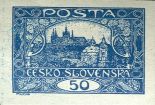Post office signs
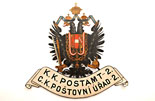
The inscriptions on the signs, initially permitted only in German, were gradually replaced by their bilingual German and Czech counterparts. In 1883, when the postal administration merged with the telegraph administration, signs with the inscription K. und K. Post und Telegrafen Amt / C. k. Poštovní a telegrafní úřad ("K.u.k. Post and Telegraph Office" in English) became the standard for post offices providing telegraph services. Detailed specification of the type of service provided by the outlet, e.g. Telephone Office, Savings Post Office Collection Point, came as the range of services was becoming wider. Oval enamel signs appeared in the 1890s.
Post office signs used after the declaration of an independent Czechoslovakia as a replacement for the Austrian signs are among the highlights of this sub-collection. Typically, they were painted wooden signs made by local craftsmen for postal employees and decorated with various symbols of the new state, such as its national emblem, linden branches, etc. They were soon replaced by the model oval varnished signs with a unified design, decorated with the small national emblem - Czech lion.
A c. 1919-20 wooden sign of post bus stop is another highlight, as metal signs are the only ones preserved from the boom years of post bus service between 1921 and 1933. Post office signs from the late 1918 with German inscriptions painted out or, conversely, those with erased Czech inscriptions from regions split from Czechoslovakia under the 1938 Munich Agreement, bear evidence of the turbulent history of the Czechoslovak state. Post office signs and panels from the era of the socialist Communications and contemporary materials are among the youngest acquisitions.
Photo gallery
-
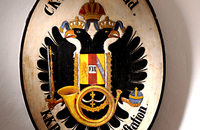 Austrian wooden post office sign
Austrian wooden post office sign -
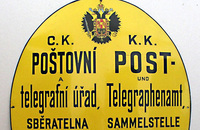 Austrian oval post office sign
Austrian oval post office sign -
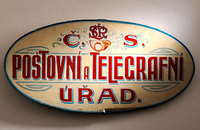 Czechoslovak wooden post office sign
Czechoslovak wooden post office sign -
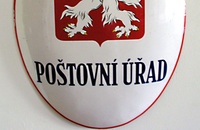 Model post office sign of interwar Czechoslovakia Model
Model post office sign of interwar Czechoslovakia Model -
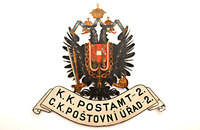 Austrian metal post office sign
Austrian metal post office sign -
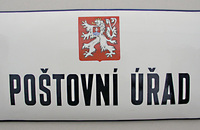 1950s post office sign
1950s post office sign -
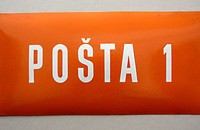 Post office sign used by the Czechoslovak Communications
Post office sign used by the Czechoslovak Communications
![Postal museum [logo]](/PostMuzeum-theme/images/muzeum/logo_postal-museum.png)
